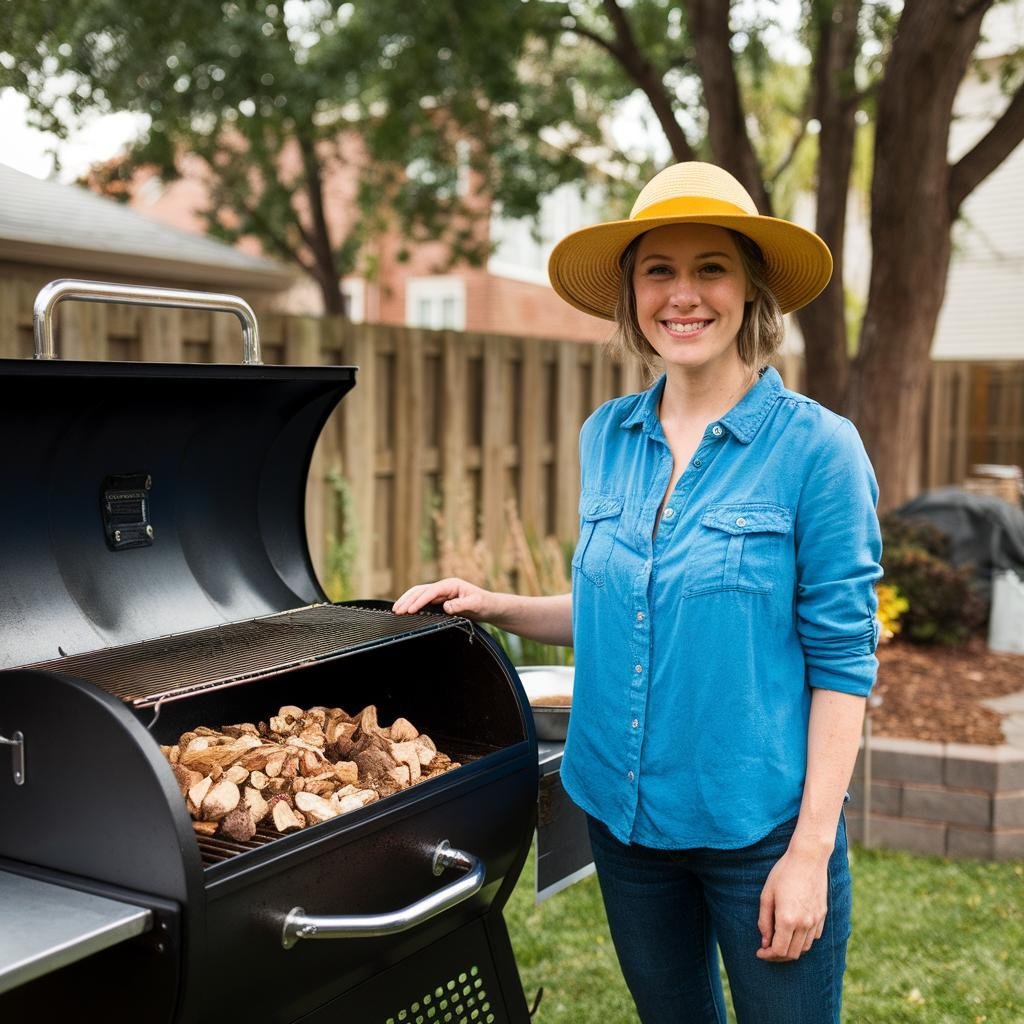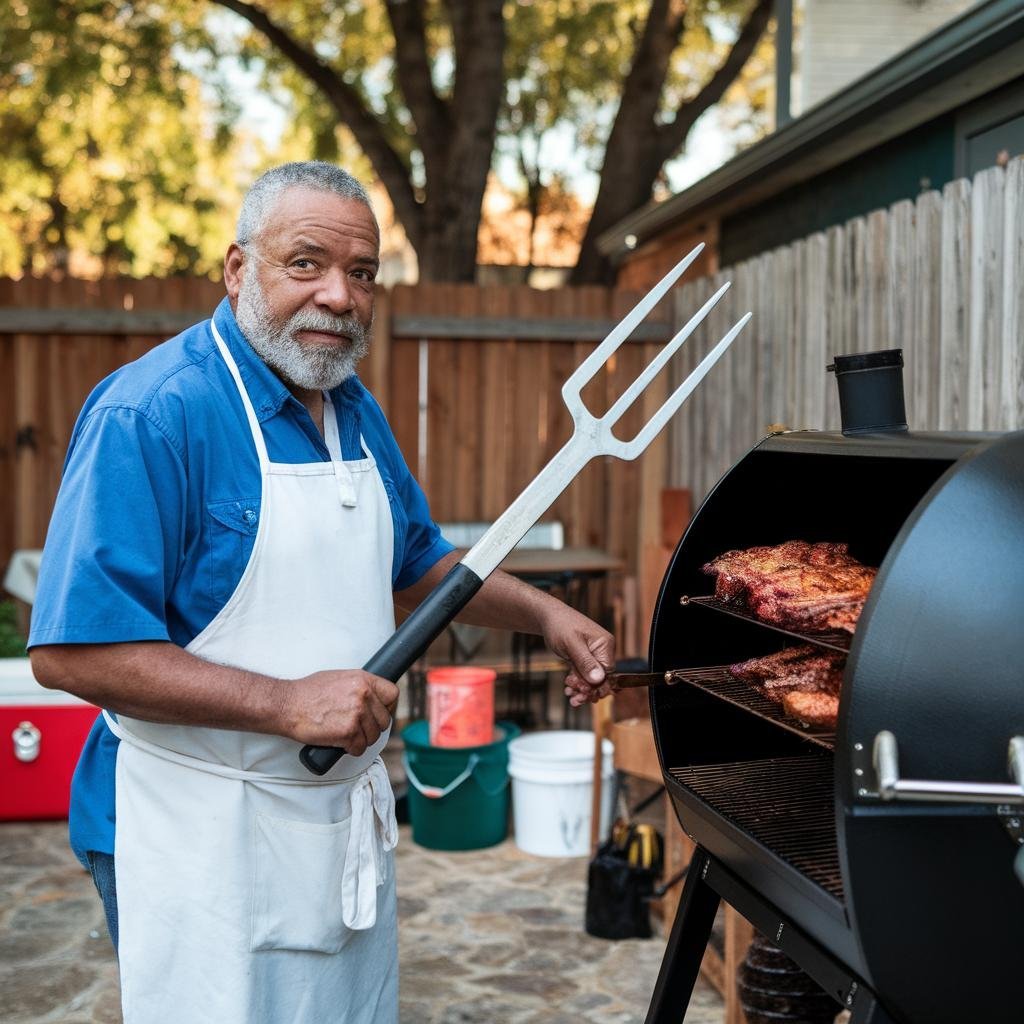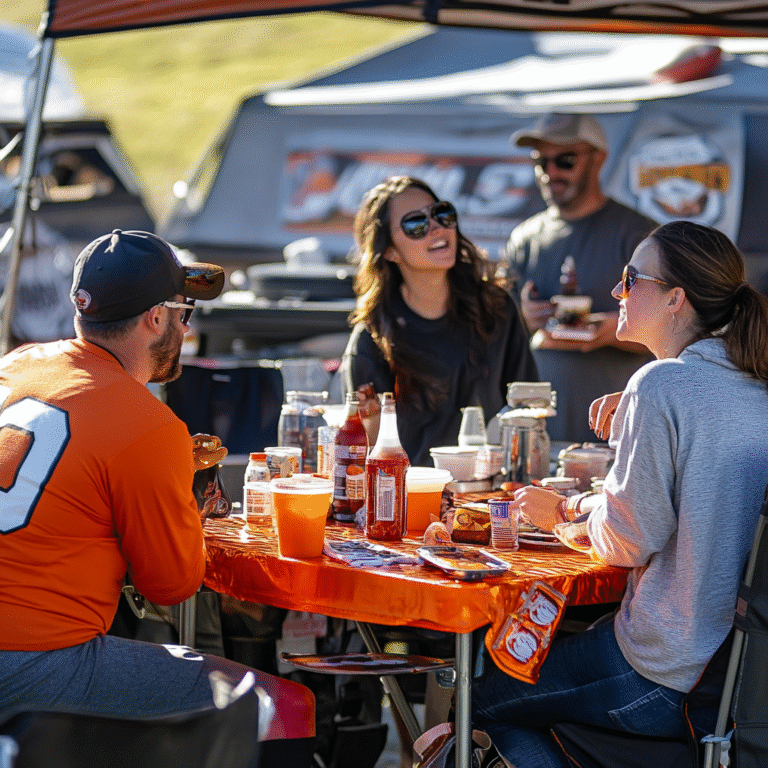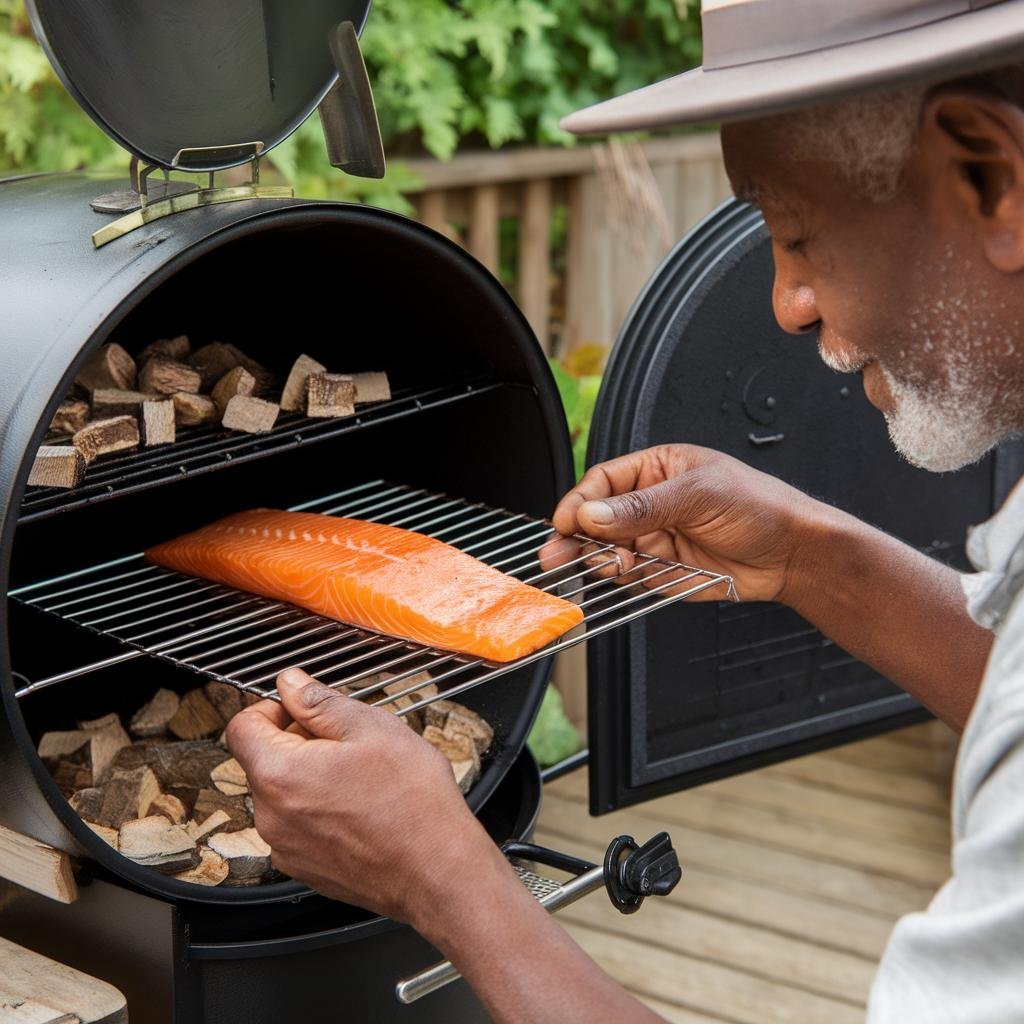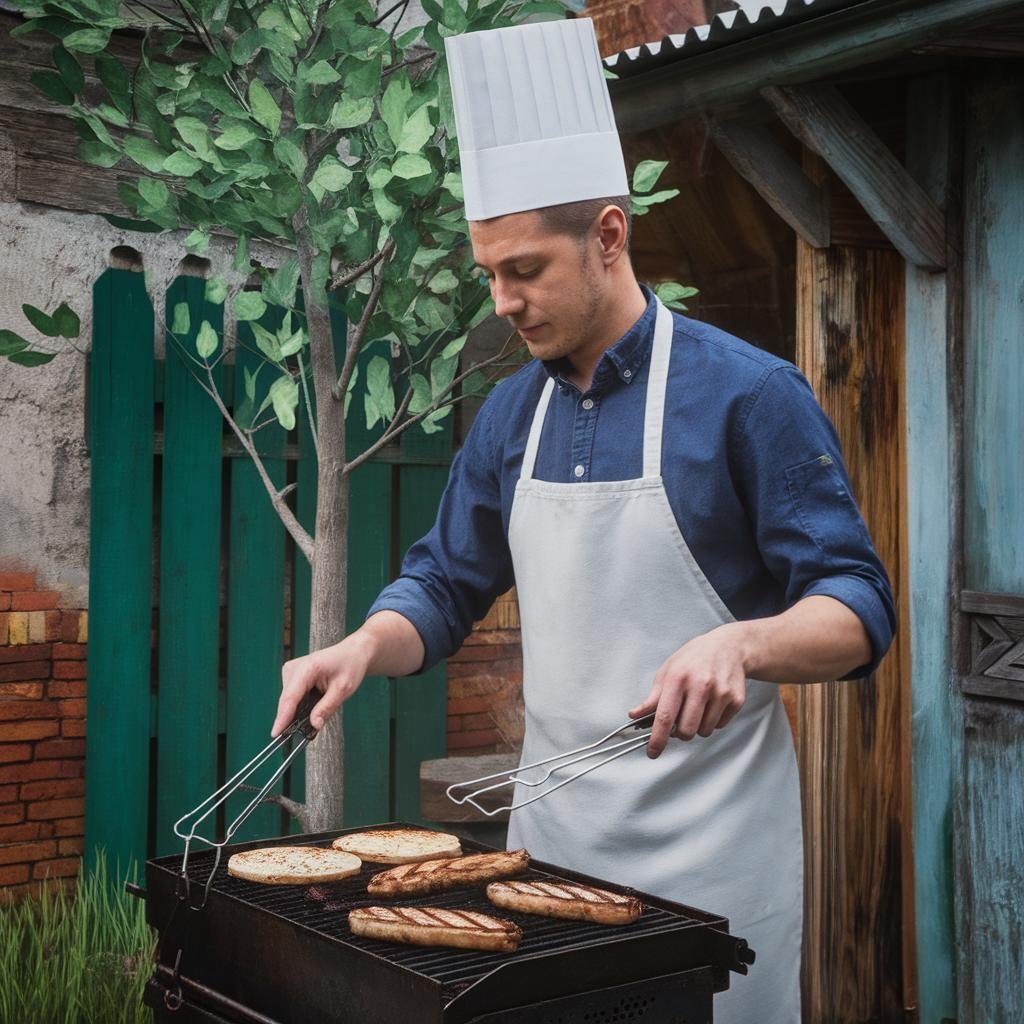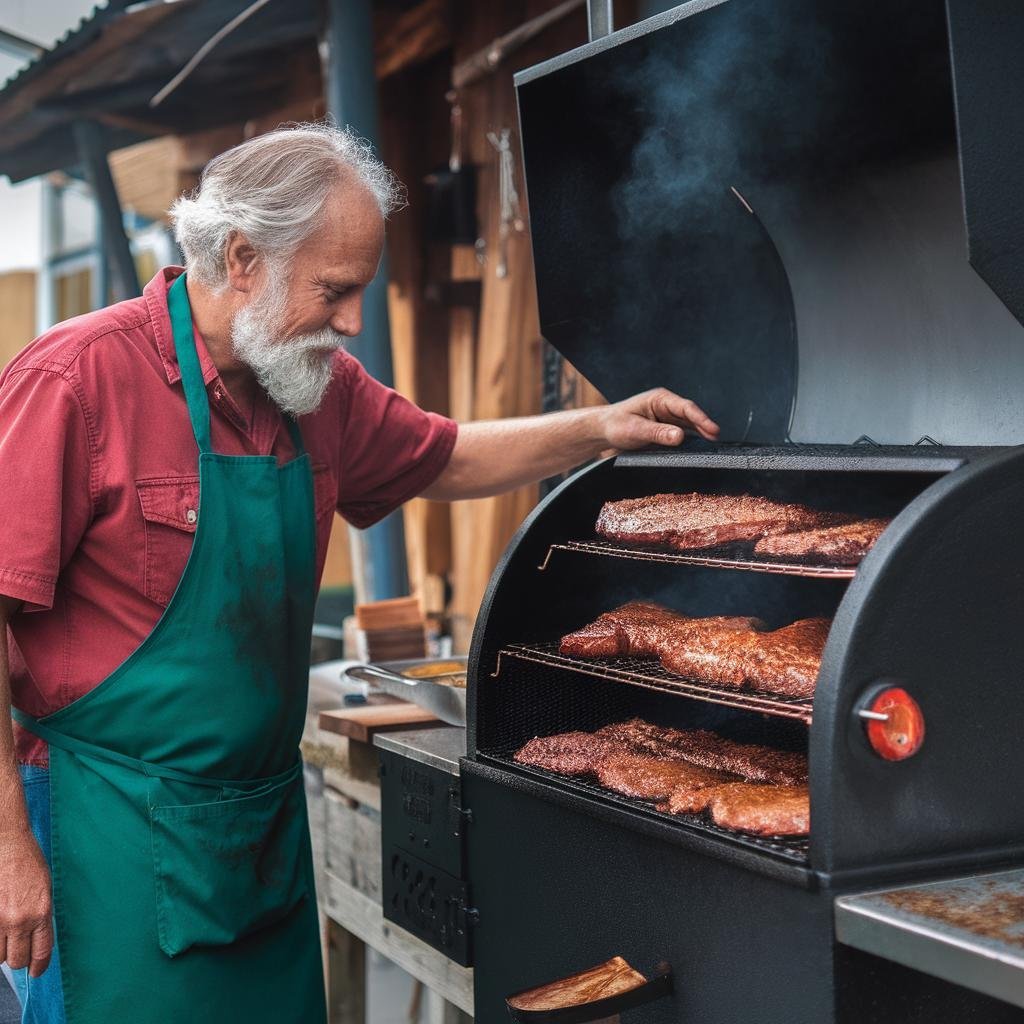Disclosure: This Post Contains Affiliate Links; We earn a commission on purchases.
If you’re new to the world of smoking meat and want to take your barbecuing skills to the next level, offset smoking is a technique worth exploring. Offset smokers, also known as stick burners or horizontal smokers, are a popular choice among barbecue enthusiasts and competition smokers. With the right knowledge and techniques, you can achieve mouthwatering results every time.
Using an offset smoker effectively requires understanding the basics of fire management, temperature control, and smoking techniques. From starting and maintaining the fire to achieving optimal temperature control, there are several tips that beginners should keep in mind to ensure a successful smoking experience.
In this guide, we will provide you with valuable insights and practical tips to get started with offset smoking. Whether it’s your first time using an offset smoker or you’re looking to improve your skills, these tips will help you master the art of offset smoking.
Key Takeaways:
- Offset smokers are popular among barbecue enthusiasts and competition smokers.
- Understanding fire management, temperature control, and smoking techniques is crucial for effective offset smoking.
- Starting and maintaining the fire properly is key to a successful cook.
- Temperature control can be achieved by adjusting the vents on the firebox and the chimney.
- Using a combination of charcoal and wood and preheating the cooking chamber can enhance the flavor of the food.
Understanding Offset Smoker Construction and Functionality
Offset smokers are popular among barbecue enthusiasts for their ability to produce deliciously smoked meats with a distinct smoky flavor. To fully grasp the art of offset smoking, it’s crucial to understand the construction and functionality of these unique smokers.
An offset smoker consists of two main components: the cooking chamber and the firebox. The cooking chamber is the larger section where the food is placed for smoking, while the firebox is the smaller compartment where the fire is built. The construction of offset smokers allows for indirect heat and smoke to flow from the firebox into the cooking chamber, enveloping the food in smoky goodness.
The large cooking chamber provides ample space for arranging multiple racks of meat or other food items, making it ideal for smoking large quantities. On the other hand, the firebox is responsible for generating heat and smoke. It can be loaded with charcoal, wood, or a combination of both to achieve the desired flavor profile.
To ensure proper temperature control, offset smokers are equipped with vents on the firebox and a chimney on the cooking chamber. These vents allow for precise adjustments, regulating the airflow and heat distribution throughout the smoker. By carefully manipulating the vents, BBQ enthusiasts can fine-tune the temperature to achieve perfect smoking conditions.
As with any complex piece of cooking equipment, offset smokers consist of various parts that contribute to their overall functionality:
- Firebox: This is where the fire is built and the fuel is placed for combustion.
- Cooking Chamber: The main area where the food is positioned for smoking.
- Grates: These are the racks or shelves on which the food is placed. They can be adjustable or fixed.
- Vents: Located on the firebox, these adjustable openings control the airflow and heat intensity.
- Chimney: Situated on the cooking chamber, the chimney allows for smoke and heat to escape.
- Dampers: These are smaller vents or openings within the smoker that can be adjusted to fine-tune the airflow.
- Water Pan: Some offset smokers have a water pan, which helps maintain moisture levels during the cooking process.
- Thermometer: A built-in thermometer allows for accurate temperature monitoring within the cooking chamber.
Understanding the construction and functionality of an offset smoker is essential for beginners looking to master the art of offset smoking. With this knowledge, aspiring pitmasters can confidently navigate their way to producing mouthwatering and perfectly smoked barbecue creations.
Starting and Maintaining the Fire in an Offset Smoker
The key to a successful cook on an offset smoker is starting and maintaining the fire properly. By following these tips, you can ensure that your offset smoker fire is lit and managed effectively, allowing for a consistent and flavorful cooking experience.
Starting the Fire
To begin, it is recommended to start the fire in your offset smoker using charcoal in a chimney starter. This method ensures even heat distribution and a steady burn. Once the coals are lit and ashed over, carefully transfer them to the firebox of the smoker.
Adding Wood for Smoke
Now that the fire is established with the charcoal, it’s time to add wood for smoke. Preheating the wood in the firebox before adding it helps it catch fire quickly and produce clean smoke. This enhances the flavor profile of your smoked meats and ensures a consistent smoky aroma.
Managing the Fire
Temperature control is an essential aspect of offset smoking, and it can be achieved by adjusting the vents on the firebox and the chimney on the cooking chamber. These adjustments regulate the airflow and, subsequently, the amount of heat and smoke produced. Regularly check the fire and add new logs as needed to maintain a consistent and steady temperature throughout the cooking process.
“Proper fire management is the key to a successful cook on an offset smoker. By starting the fire with charcoal, preheating the wood, and managing the airflow, you can achieve exceptional results every time.” – BBQ enthusiast
Offset Smoker Chimney
The chimney on the cooking chamber of an offset smoker plays a crucial role in temperature control. Opening the chimney allows hot air and smoke to escape, reducing the internal temperature. Closing the chimney helps retain heat and smoke, increasing the temperature inside the cooking chamber. By adjusting the chimney, you can fine-tune the temperature to achieve the desired cooking conditions.
By mastering the art of starting and maintaining the fire in your offset smoker, you can create mouthwatering barbecue dishes that will impress your guests and leave them craving more.
Achieving Optimal Temperature Control in an Offset Smoker
Temperature control is crucial when it comes to offset smoking. To ensure your cooking temperature is accurate, it’s essential to use a reliable offset smoker thermometer placed at the grate level. This allows you to monitor the temperature precisely, leading to perfectly cooked and flavorful results.
When aiming for the desired temperature, beginners should make adjustments to the vents on both the firebox and the chimney. By fine-tuning these vents gradually and avoiding large adjustments, you can maintain a stable temperature throughout the entire cooking process. This level of control helps you achieve consistent and mouthwatering barbecue every time you fire up your offset smoker.
It’s important to note that temperature variations can occur within the cooking chamber. To ensure even cooking, it’s recommended to rotate the meat occasionally during the smoking process. This allows all sides of the meat to experience the same temperature, resulting in a deliciously tender and evenly cooked end product.
Offset Smoker Vent Adjustment Tips:
- Start with the vents partially open to allow for sufficient airflow, gradually adjusting them as needed to reach the desired temperature.
- Keep a close eye on the temperature gauge and make small adjustments to the vents accordingly to maintain consistency.
- Avoid making sudden and drastic changes to the vent openings, as this can cause temperature fluctuations that may impact the quality of your smoking.
By mastering the art of temperature control and vent adjustment, you’ll be well on your way to becoming a seasoned pitmaster with your offset smoker. So, go ahead, grab your smoker thermometer, make those vent adjustments, and let the smoky magic unfold!
| Offset Smoker Temperature Control Tips | Offset Smoker Thermometer | Offset Smoker Vent Adjustment |
|---|---|---|
| Use a reliable offset smoker thermometer to monitor cooking temperature accurately. | Adjust the vents on the firebox and chimney gradually for fine temperature control. | |
| Rotate the meat within the cooking chamber to ensure even cooking. | Avoid sudden and drastic vent adjustments to maintain a stable temperature throughout the cook. |
Best Practices for Cooking with an Offset Smoker
When it comes to offset smoker cooking, following a few best practices can help you achieve optimal results. From selecting the right wood to controlling the temperature, these tips will ensure that your barbecue creations are flavorful and perfectly cooked.
1. Offset Smoker Wood Selection
The type of wood you use for smoking can greatly impact the flavor of your food. It’s best to choose quality smoking wood, such as hardwoods or fruitwoods, that can provide a clean-burning and aromatic smoke. Popular options include oak, hickory, apple, and cherry wood. Experimenting with different woods can add unique flavors to your dishes.
2. Offset Smoker Preheating
Before placing your meat on the cooking grates, it’s important to preheat the cooking chamber. This helps avoid excessive smoke that can lead to unpleasant flavors. Preheating also ensures that the smoker is at the desired cooking temperature, allowing for more consistent results. Aim for a preheating time of around 20-30 minutes to ensure that the smoker is properly warmed up.
3. Offset Smoker Smoke Control
Monitoring the smoke produced by your offset smoker is crucial for maintaining a balanced flavor profile. Too much smoke can overpower the taste of your food, while too little smoke may result in a lack of smoky flavor. It’s recommended to keep the smoker’s lid closed as much as possible to retain the smoke and maintain a steady cooking temperature. Remember to adjust the vents on the firebox and chimney to control the airflow and smoke production.
4. Offset Smoker Cooking Tips
Here are a few additional cooking tips to enhance your offset smoking experience:
- Place a water pan in the cooking chamber to help maintain moisture during long cooks.
- Rotate your meat occasionally for even cooking and to avoid hot spots within the smoker.
- Use a reliable meat thermometer to ensure that your food reaches the desired internal temperature.
- Don’t rush the cooking process; low and slow is the key to tender and flavorful smoked dishes.
| Offset Smoker Cooking Tips | Offset Smoker Wood Selection | Offset Smoker Preheating | Offset Smoker Smoke Control |
|---|---|---|---|
| Experiment with different seasonings and rubs to add flavor to your meat. | Select high-quality smoking wood for clean-burning and flavorful smoke. | Preheat the cooking chamber for consistent cooking temperature. | Monitor and control the amount of smoke produced by adjusting vents. |
| Patience is key; allow the meat to cook slowly to achieve tenderness. | Popular wood options include oak, hickory, apple, and cherry. | Preheating helps avoid excessive smoke and unpleasant flavors. | Keep the smoker’s lid closed to maintain steady temperature and smoke. |
“Using a combination of charcoal and wood provides both heat and flavor to your smoked dishes.” – [Expert Name], BBQ Pitmaster
Conclusion
Offset smoking can be a truly rewarding experience for barbecue enthusiasts. By mastering the various aspects of offset smoker usage, beginners can elevate their smoking game and achieve delicious results with every cook. From understanding the construction and functionality of an offset smoker to starting and maintaining the fire properly, temperature control, and following best practices, there are several key tips to keep in mind.
By applying these offset smoker tips, individuals can become masters of offset smoking. They will not only gain the knowledge and skills required to create mouthwatering barbecue creations but also impress their family and friends with their newfound expertise. From perfectly cooked meats with a delectable smoky flavor to mastering the art of temperature control, offset smoking techniques can be learned and mastered with time and practice.
So, whether you are a beginner just starting your offset smoking journey or someone looking to refine their skills, remember that practice makes perfect. Keep experimenting with different woods, flavors, and cooking techniques to find what works best for you. With dedication and a passion for barbecue, you too can become an offset smoker master. Happy smoking!
Source Links
- https://www.smokedbbqsource.com/how-to-use-an-offset-smoker/
- https://www.atbbq.com/en-mx/blogs/expert-advice/mastering-the-offset-smoker
- https://thebbqtoolbox.com/index.php/2018/07/02/offset-smoker-for-beginners/

Ryan Conlon is a BBQ enthusiast and inspired chef on a journey through the smoky, savory world of outdoor cooking. Hailing from the heart of the Midwest, Ryan’s passion for grilling ignited during his early years, where family gatherings often revolved around the sizzle of the grill and the aroma of seasoned meats.

